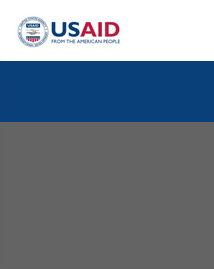July 20, 2015
The Committee directs the USAID Administrator to submit a report to the Committee not later than 90 days after enactment of this act describing the objectives of Power Africa; criteria and metrics for measuring progress; and steps taken to: a) promote reforms in energy governance; (b) promote energy efficiency; (c) leverage private sector resources; and (d) increase energy access with distributed, mini, and off-grid related energy options. (FY2015 Report 113-195 accompanying S. 2499).
1. Objectives of Power Africa
Power Africa is a U.S. Presidential initiative launched in June 2013 by President Obama. Rooted in partnership, the initiative is working with African governments, the private sector and others to double the number of people with access to electricity in sub-Saharan Africa. Utilizing the combined expertise of many U.S. Government agencies, the World Bank Group, the African Development Bank, the Government of Sweden, host governments, and private sector partners, Power Africa is unlocking energy resources and building capacity in the region to enhance energy security, reduce poverty, and advance economic growth.
Recognizing that the level of funding needed to electrify the continent far outstrips what any government or donor can do alone, Power Africa supports an innovative, transaction-focused model that focuses on removing the barriers to successful power projects and promoting better governance of the growing power sector throughout sub-Saharan Africa. Power Africa strives to increase regional, cross-border energy trading, while also working with partner countries and regional mechanisms to meet critical energy needs and achieve energy security, while at the same time promoting sustainable development and improving lives across the continent.
Power Africa has made significant early progress towards its initial goals of adding 10,000 Megawatts (MW) and 20 million new connections for households and businesses in the first set of Power Africa partner countries -- Ethiopia, Ghana, Kenya, Liberia, Nigeria, and Tanzania. In August 2014, President Obama tripled Power Africa’s goals to expand the reach across all of sub-Saharan Africa in pursuit of a new, aggregate goal of 30,000 MW of additional electricity generation capacity and increasing electricity access by at least 60 million new household and business connections. Power Africa seeks to strengthen the institutional and human capacity needed to attract investment on a long-term, sustainable basis and to effectively manage a growing power sector. Power Africa provides technical assistance and transactional support through regional and country-focused Transaction Advisors, who serve as impartial advisors to African partner governments and facilitate access to the full range of Power Africa tools.
The U.S. Government is committed to providing more than $7 billion in financial support, loan guarantees and grants to help advance Power Africa’s goals. To date, Power Africa has leveraged more than $20 billion in private sector commitments for on-grid and off-grid projects, and an additional $9 billion in commitments from the African Development Bank, the World Bank Group and the Swedish Government.








Comment
Make a general inquiry or suggest an improvement.